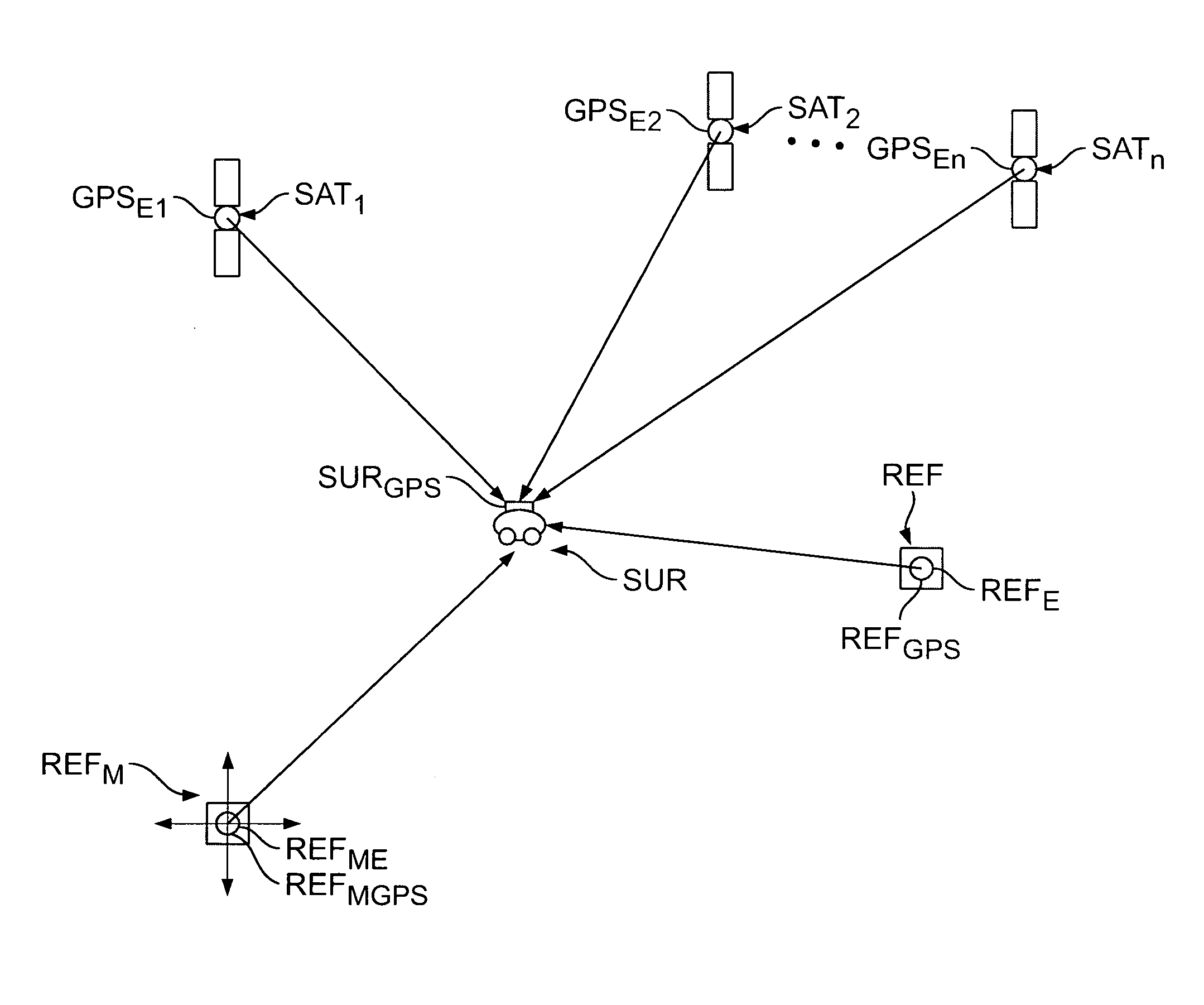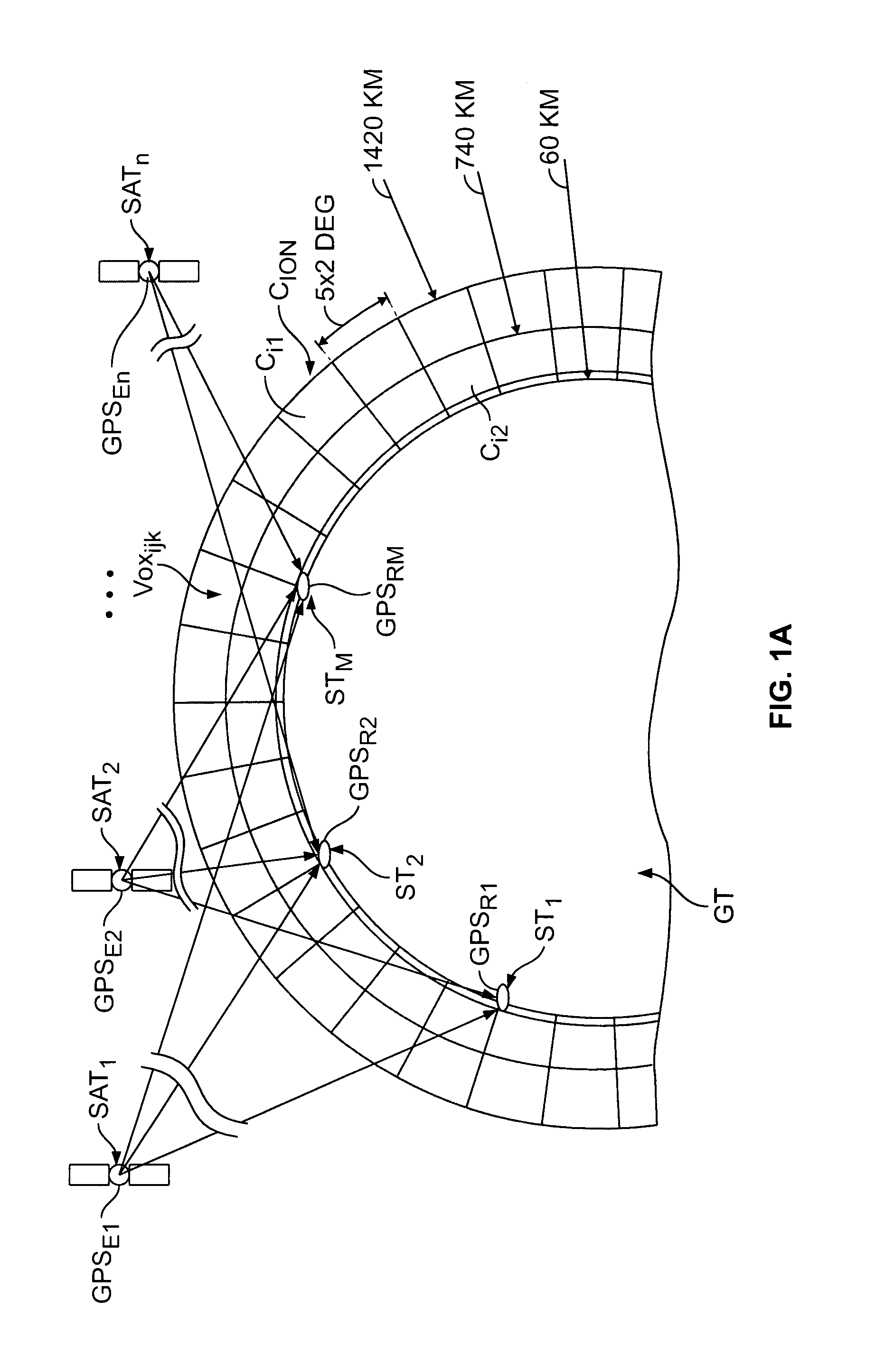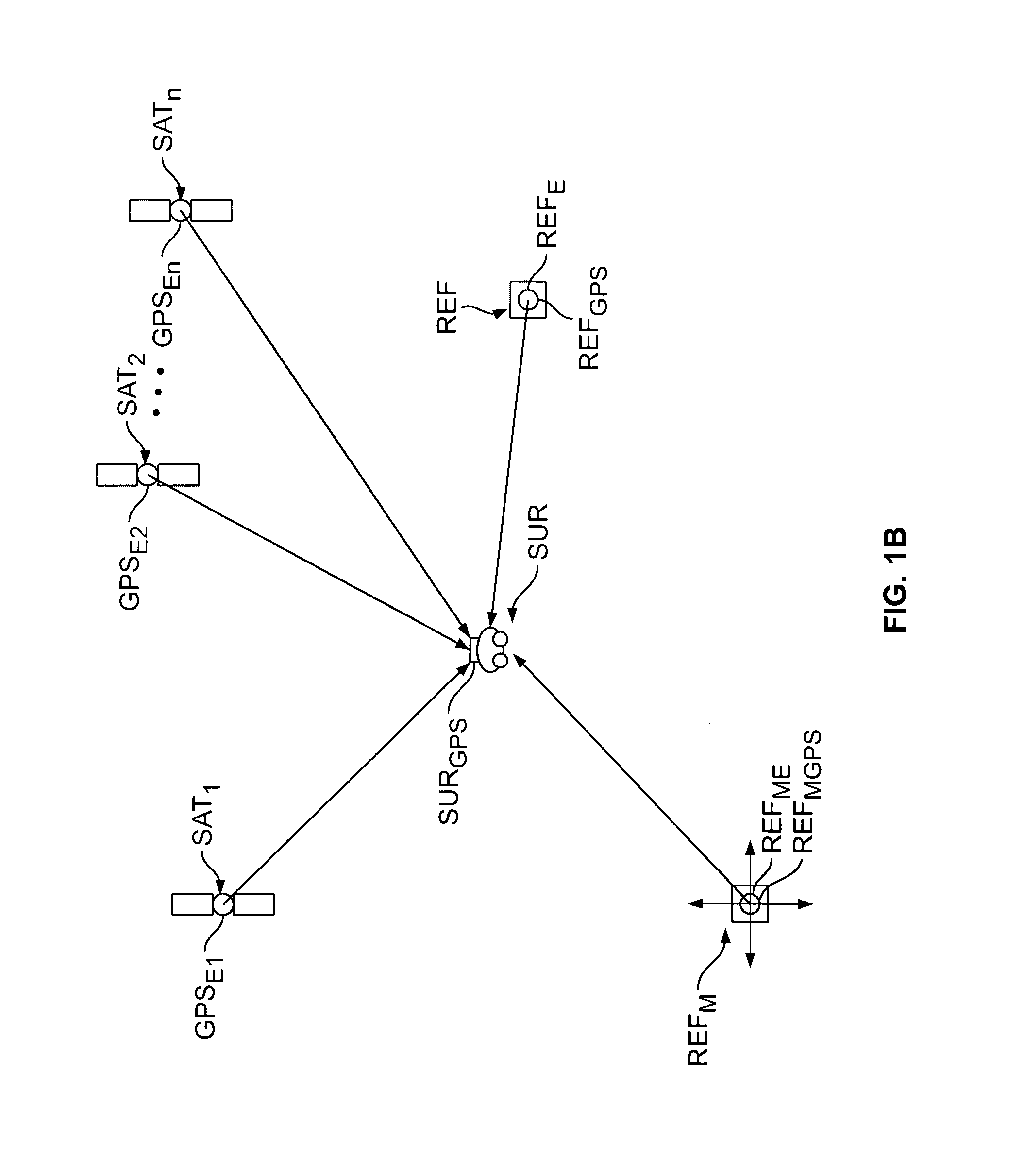Method and system for real time navigation using satellite transmitted three-carrier radio signals and ionospheric corrections
a technology of satellite transmission and radio signal, applied in the field of real-time navigation using satellite transmitted three-carrier radio signal and ionospheric correction, can solve the problems of increasing the cost of the global system, aircraft, and inability to accurately determine the position of the rover, so as to reduce the number of reference stations, and improve the performance
- Summary
- Abstract
- Description
- Claims
- Application Information
AI Technical Summary
Benefits of technology
Problems solved by technology
Method used
Image
Examples
Embodiment Construction
[0055]Hereinafter, without in any way limiting the scope of the invention, we will focus on the context of its preferred application unless otherwise indicated, i.e., on the case of a high-precision satellite navigation method using three-carrier radio waves of different frequencies transmitted by satellites, and real-time corrections derived from a descriptive real-time ionospheric model of a region sounded by radio frequency radiation from satellites.
[0056]We will now describe the main steps of the method according to the invention in detail, using typical numeric values to illustrate them. It comprises three basic steps, which are similar to those of the aforementioned “TCAR” method and are explained below:[0057]Step 1:
[0058]In order to resolve the so-called “extra wide lane” ambiguity (with a typical wave-length of 7.5 meters in a data set of a given exemplary experiment), a combination of codes known as “pseudoranges” is added.
[0059]Among the known causes of errors is the so-ca...
PUM
 Login to View More
Login to View More Abstract
Description
Claims
Application Information
 Login to View More
Login to View More - R&D
- Intellectual Property
- Life Sciences
- Materials
- Tech Scout
- Unparalleled Data Quality
- Higher Quality Content
- 60% Fewer Hallucinations
Browse by: Latest US Patents, China's latest patents, Technical Efficacy Thesaurus, Application Domain, Technology Topic, Popular Technical Reports.
© 2025 PatSnap. All rights reserved.Legal|Privacy policy|Modern Slavery Act Transparency Statement|Sitemap|About US| Contact US: help@patsnap.com



